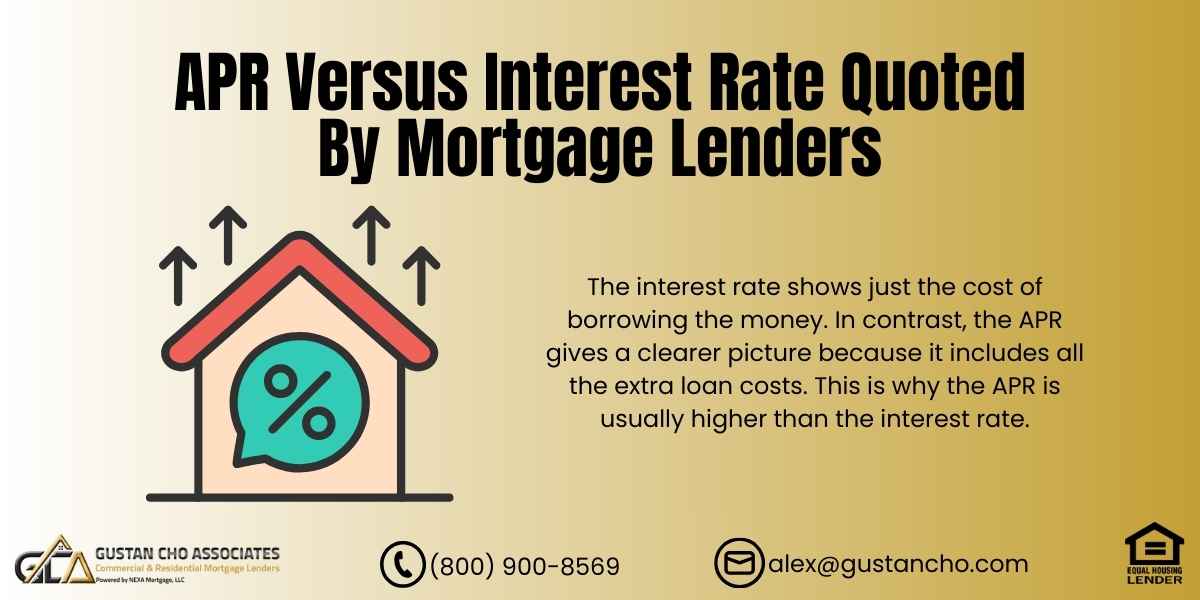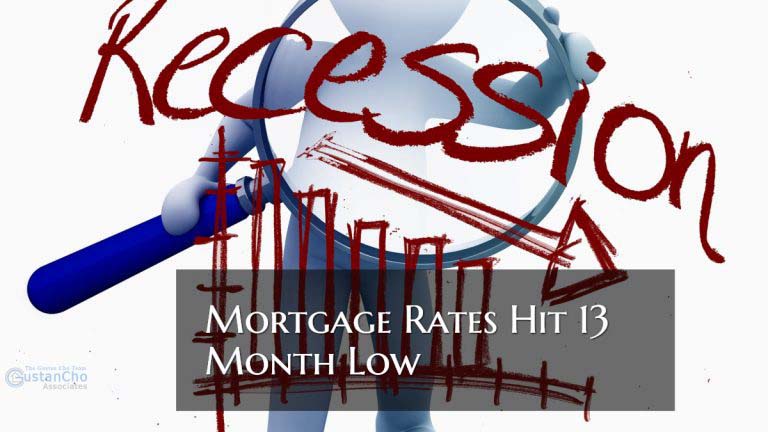APR Versus Interest Rate: What Homebuyers Need to Know in 2025
When you shop for a mortgage, you’ll see two numbers on every loan quote: APR versus interest rate. At first glance, they may seem confusing. Why is the APR higher than the interest rate? Which one should you pay attention to when comparing lenders?
In this guide, we’ll break it all down in simple, easy-to-understand terms. You’ll learn what each number means, why they’re different, and how they affect the actual cost of your home loan. By the end, you’ll know exactly how to shop smarter and save thousands on your mortgage.
What Is the Interest Rate on a Mortgage?
The interest rate is the cost of borrowing money from a lender. It is shown as a percentage and determines how much interest you will pay each month based on your loan balance.
For example, if you borrow $200,000 to buy a home at a fixed interest rate of 6.5%, this rate stays the same for the entire 30 years of the loan. This gives you predictable monthly payments. In this case, your monthly payment for principal and interest would be about $1,264.
Over the 30 years, this payment includes not only the interest but also part of the original loan amount, known as the principal.
To see the long-term costs: over the life of the loan, you would make around $455,000 in total payments. This total includes the original $200,000 borrowed plus about $255,000 in interest. So, while the monthly payment may seem manageable, it’s important to understand how interest adds up over time with a fixed-rate mortgage.
The interest rate only reflects the cost of borrowing the money. It does not cover any lender’s fees or closing costs.
Avoid Surprises at Closing
Understanding APR versus interest rate can save you thousands.
What Is APR on a Mortgage?
APR stands for Annual Percentage Rate. Unlike the interest rate, APR includes both:
- The interest rate itself
- Plus, most of the fees and costs you pay to get the loan
Those costs can include:
- Origination fees
- Discount points
- Processing and underwriting fees
- Credit report and appraisal fees
- Title and recording fees
- Lock-in fees
In short, APR gives you a bigger picture of what a loan will cost you each year. That’s why APR is always higher than the interest rate.
APR Versus Interest Rate: Quick Comparison
Here’s the simple difference:
- Interest rate = the cost of borrowing money only
- APR = interest rate + lender fees and costs
Think of it this way: the interest rate tells you the monthly cost, while APR tells you the total cost of borrowing when fees are included.
Why Is APR Higher Than the Interest Rate?
Knowing the difference between the Annual Percentage Rate (APR) and the interest rate is key for anyone borrowing money. The interest rate shows just the cost of borrowing the money. In contrast, the APR gives a clearer picture because it includes all the extra loan costs. This is why the APR is usually higher than the interest rate.
For example, Lender A offers a 6.5% interest rate but charges $2,000 in fees. The APR for this loan would be about 6.65%, factoring in those fees. On the other hand, Lender B also offers a 6.5% interest rate but charges much higher fees of $6,000. As a result, the APR for Lender B’s loan could be around 6.95%, meaning it costs more to borrow from them.
Even though both lenders show the same interest rate, the APR helps borrowers see the true cost of borrowing. It shows that Lender B’s loan is more expensive because of the higher fees, despite having the same interest rate. By looking at APRs, borrowers can make better choices and find the best loan that fits their finances.
Should I Compare APR Versus Interest Rate When Shopping?
When comparing loan options, it’s important to evaluate both the APR versus interest rate, as each can significantly influence your financial situation based on your priorities. The interest rate is particularly important if your primary concern is the monthly mortgage payment. This detail is essential for those with tight budgets, as it directly impacts how much you’ll owe each month and ultimately affects your cash flow.
Focus on the APR to understand the true cost of a loan. The APR includes both the interest rate and any fees, giving you a clearer picture of the total cost over time. Knowing the difference between APR and interest rate is important for planning your finances, especially for long-term decisions.
For example, if you anticipate selling or refinancing your home within 3 to 5 years, the interest rate may be of greater importance since you may not hold onto the loan long enough to justify any high upfront fees. However, if you intend to stay in your home for the long haul, using APR as a benchmark will provide a clearer understanding of the overall costs involved, allowing for a more informed comparison between your loan options.
Why is my APR higher than the quoted interest rate?
Because it includes lender fees, closing costs, and other expenses.
Is APR More Important Than Interest Rate When Comparing Mortgages?
Not always. Here’s why:
- APR assumes you’ll keep the loan for the full term (like 30 years).
- If you sell or refinance early, you may never fully feel the impact of those upfront costs.
So if a lender offers you a low APR but requires you to pay thousands in discount points, that only makes sense if you stay in the loan long enough to break even.
Borrowers who plan to move within a few years may prefer a slightly higher APR with lower upfront costs.
How Much Higher Should APR Be Than Interest Rate?
There is no set number for the difference between the APR and the interest rate, but a small discrepancy is considered normal. Typically, for standard loans, the APR is about 0.10% to 0.25% higher than the interest rate. However, if you encounter a significantly larger gap, such as 0.50% or more, it may indicate that the loan has higher fees or discount points associated with it.
In 2025’s higher-rate market, lenders often use discount points to make rates look more competitive. That’s why comparing APR versus interest rate is more important than ever.
APR Versus Interest Rate on FHA, VA, and Conventional Loans
Different loan programs can affect the APR gap:
- FHA loans: These typically come with elevated APRs due to initial and yearly mortgage insurance premiums (MIP).
- VA loans: APR includes the VA funding fee, making the APR look much higher than the interest rate.
- Conventional loans: APR differences usually come from discount points or private mortgage insurance (PMI).
APR Versus Interest Rate on Adjustable-Rate Mortgages (ARMs)
With ARMs, the interest rate may start lower, but the APR reflects the risk that the rate will adjust higher later. That’s why the APR on an ARM is often closer to or even higher than fixed-rate loan APRs, even if the starting interest rate looks tempting.
Case Scenario: APR Versus Interest Rate Side by Side
Let’s say you’re shopping for a $300,000 loan.
- Lender A: 6.50% interest rate, $3,000 in fees → APR = 6.62%
- Lender B: 6.50% interest rate, $8,000 in fees → APR = 6.90%
- Lender C: 6.75% interest rate, $2,000 in fees → APR = 6.82%
Which is best? It depends:
- If you’ll stay in the home 30 years → Lender A has the lowest APR, making it the cheapest long-term.
- If you move in 3–5 years → Lender C may be smarter, since you’ll pay fewer upfront fees.
How Do Lenders Calculate APR?
APR is calculated by taking:
- The loan amount
- Subtracting upfront loan costs
- Spreading those costs over the life of the loan
- Expressing it as a yearly rate
While you don’t need to run the math yourself, knowing this formula helps you understand why fees make APR higher than the interest rate.
APR Versus Interest Rate: What Borrowers Should Watch Out For in 2025
- Discount points: In today’s market, lenders may advertise super-low interest rates that require you to buy points. That makes the APR jump higher.
- Over-disclosed fees on Loan Estimates: Some loan officers overestimate costs to be safe, which inflates the APR. Always ask for updated quotes.
- Short-term vs long-term plans: If you won’t keep the loan long, a lower APR with high upfront costs may not benefit you.
Which matters more—APR or interest rate?
Both are important: rate affects your payment, APR shows long-term cost.
Final Thoughts: APR Versus Interest Rate
The difference between APR versus interest rate is one of the most important things to understand when you’re buying or refinancing a home. The interest rate tells you your monthly cost, while the APR tells you the total cost when fees are included.
- Compare interest rates for monthly payment affordability.
- Compare APR to see the actual cost over the life of the loan.
- Always consider your plans — will you keep the home long-term or sell/refinance sooner?
At Gustan Cho Associates, we make it simple. We’ll walk you through your options, explain the numbers in plain English, and help you pick the loan that truly saves you money.
Borrowers who need a five-star national mortgage company licensed in 50 states with no overlays and who are experts on APR versus interest rate, please contact us at 800-900-8569, text us for a faster response, or email us at alex@gustancho.com. Apply today with Gustan Cho Associates and get a personalized quote with no lender overlays, fast approvals, and 30-day or less closings.
Frequently Asked Questions About APR Versus Interest Rate:
Q: What Does APR Versus Interest Rate Mean on a Mortgage?
A: APR versus interest rate means you’re looking at two different costs. The interest rate is the charge for borrowing money, while APR also adds lender fees.
Q: Why is APR Versus Interest Rate Always Different?
A: APR is always higher than the interest rate because it includes closing costs, discount points, and lender fees.
Q: Which Should I Look at First, APR Versus Interest Rate?
A: Look at both. The interest rate shows your monthly payment, while the APR shows the loan’s full cost, including fees.
Q: Can Two Lenders Give Me the Same Rate but a Different APR?
A: Yes. That’s why understanding APR versus interest rate matters. Two lenders may both quote 6.5%, but one with higher fees will have a higher APR.
Q: Does APR Versus Interest Rate Affect My Monthly Payment?
A: Your monthly payment is based on the interest rate, not the APR. However, the APR helps you calculate the total loan cost.
Q: Is APR Versus Interest Rate More Important if I Sell My Home Soon?
A: If you plan to move or refinance in a few years, the interest rate may matter more. If you plan to keep the loan long-term, focus on APR.
Q: How Much Higher Should APR Be Than the Interest Rate?
A: In most cases, APR versus interest rate is only about 0.10% to 0.25% higher. If it’s much bigger, it means there are high fees.
Q: Do Discount Points Change the APR Versus the Interest Rate?
A: Yes. Buying points lowers your interest rate but makes your APR higher because of the upfront cost.
Q: Does APR Versus Interest Rate Include Property Taxes and Insurance?
A: No. The APR only includes lender fees and closing costs. It does not include taxes, insurance, or HOA dues.
Q: Who Can Explain APR Versus Interest Rate to Me in Plain English?
A: Gustan Cho Associates can. We clearly explain APR versus interest rate, compare lenders, and help you find the lowest-cost loan.
This article about “APR Versus Interest Rate Quoted By Mortgage Lenders” was updated on August 7th, 2025.
Transparency You Can Trust
We’ll break down APR and rates so you know your true costs.









